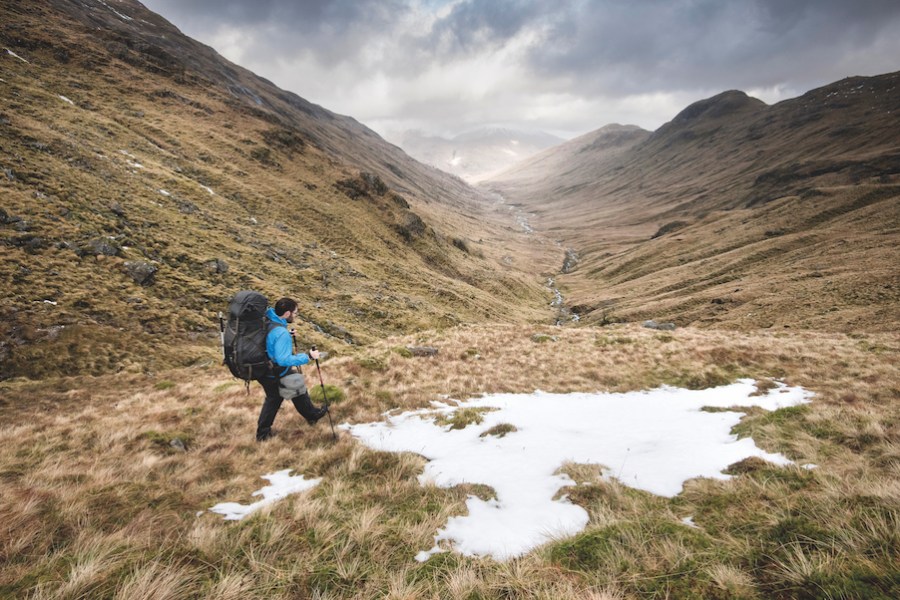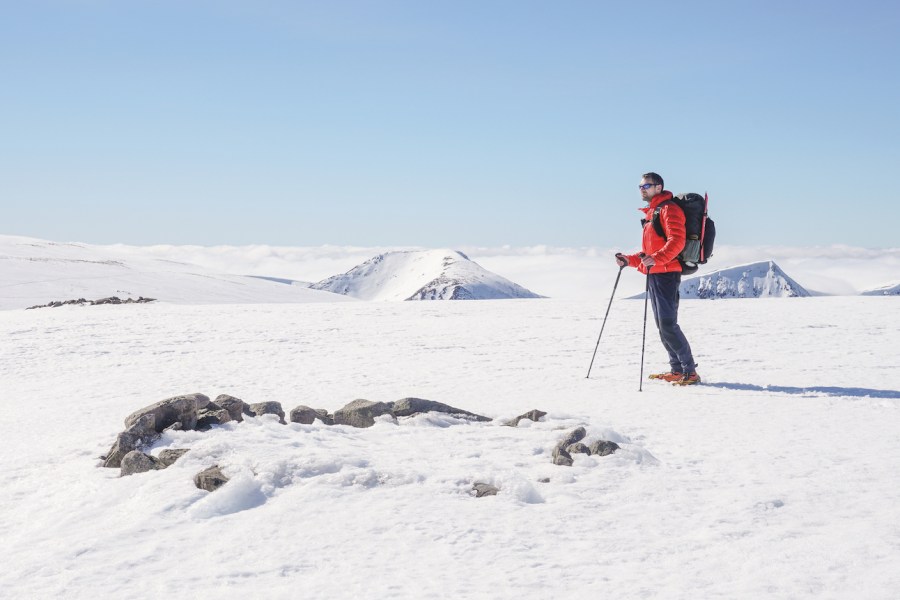As the climate warms, snow in the hills is an increasingly hard thing to predict. Mary-Ann Ochota asks: is it time to stop dreaming of the ‘perfect winter’ and a white mountain Christmas?
The other day I was standing in the Post Office queue, surrounded by displays of Christmas cards. There were cute fox cubs, cartoon penguins throwing snowballs and loads of nostalgic winter scenes. Ladies in Victorian bonnets, carollers gathered in ye olde market squares – all surrounded, of course, by generous amounts of snow; the ‘perfect winter’.
Words: Mary-Ann Ochota | Main image: David Lintern
The notional ‘White Christmas’ was true for some of those bonneted Victorians. Charles Dickens, for example, was born during the so-called ‘Little Ice Age’, a period of uncharacteristically cold weather that hit northern Europe from around 1550- 1850. There were some upsides – skating matches on the River Thames, ‘Frost Fairs’ and hog roasts. There were also cataclysmic downsides – floods, failed harvests, mass mortality and social unrest (funny that, how history can teach us what might happen when our climate rapidly changes).
Daring to dream of a perfect winter
But it’s increasingly unwise to dream of White Christmases in the UK – even in the mountains. If ‘proper’ amounts of snow arrive, it’s more likely to be January, maybe February or March, or even as late as May. And as the climate warms, the levels of snow we get – and when we get it – are increasingly fickle and difficult things to predict.
A few years back, an instructor from Glenmore Lodge (the National Outdoor Training Centre for Scotland, near Aviemore) described how he and the rest of the staff team were increasingly having to factor in a two-hour walk before they could get students to areas that were snowy or icy enough to practise skills. When you want to teach ice axe arrests, snow holing or cutting steps during short winter days, four hours of ‘commuting’ is far from ideal. And this is in the famously chilly Northern Corries of the Cairngorms, on the edge of the subarctic expanses of the Cairngorm plateau.

Knoydart, Scottish Highlands, in an almost-snowless February. Credit: James Roddie
In the Lake District or Snowdonia, mountain snow is becoming an even more blink-and-miss it affair. For me, trying to reach mountain areas from Hertfordshire, it feels perilous to plan. If I want to go winter walking, using ice axe and crampons, which week in which month should I pick? I want to be able to book my train and hostel and know that I’ll get the magical wonderland of rimeencrusted trig points, camouflaged mountain hares and summit snowmen. I even want the navigational challenge of a whiteout.
Sure, Mother Nature thwarting my plans is a free lesson in humility. But there are commercial implications too. The Scottish snowsports industry is worth an estimated £30 million and creates around 1000 jobs. 2019 was a warm-weather disaster. 2020 and 2021 were Covid lockdown disasters. Now that folk can fly again, perhaps will-itwon’t-it-snow-in-Scotland won’t be worth the gamble for winter holidaymakers.
Mountain magic
And what about publications like TGO? Long features and route guides in the magazine – usually photographed the year before publication, so the season fits – are becoming a supreme gamble. If it’s 15C outside, the rivers are swollen with rain and the midgies are still biting, it’s jarring to read reviews of ice axes, crampons and B2 boots. Relevance is all. Or, at least I think it is.
The people who choose the ‘White Christmas’ postcards don’t mind that it doesn’t reflect reality. Maybe that’s not what it’s about. Perhaps Christmas has always been about makebelieve and magic, nostalgia and hope. Perhaps it’s about ignoring the cataclysm of climate change and dreaming instead of shiny new goggles and snow angels. Even if the weather outside is all wrong, we might still quite like a magazine full of dazzling images of White Christmases – and winters – just like the ones we used to know.
Mary-Ann is a broadcaster, anthropologist and keen hillwalker. She’s the hillwalking ambassador for the British Mountaineering Council, a trustee for the John Muir Trust and a fellow of the Royal Geographical Society. These are her personal opinions. Find her on Instagram and Twitter @MaryAnnOchota.







